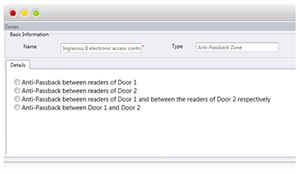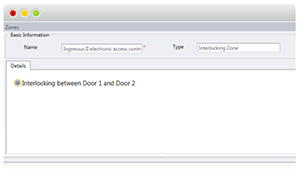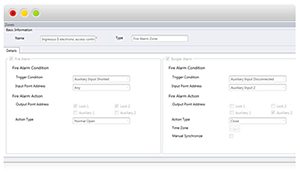| B. Interior Volumetric Detection System |
|
| In case intruders already bypass the door sensor and get into the secure zone, it is important to have the second layer of security, the interior volumetric detection system to identify them. Thus, a motion detector is the best sensor to do this job. Access is prohibited for some restricted area after the normal operation hours. The door is locked and no access is granted during the time period. The intruder tends to break into this zone because there is nobody blocking their way. Install and activate the motion detector at this area, so it becomes the invisible security guard to look after the zone. It uses K-band microwave technology and uniform sensitive signals to sense any volumetric changes in the zone. Whenever it detects the movement of the intruder, it outputs alarm signals to the reader/controller/alarm system quietly. Security officers can then take serious action to arrest the intruder after they know where he is. |

|
| There are invisible intruders, for example fire or smoke, which are more dangerous than the sneaked-in intruders. These incidents are unpredictable and it can start from the interior anytime. It is not feasible to have security guards monitor fire incident all day long, at all points of the building. Instead, you can install another type of interior volumetric detection system, for example smoke/heat sensor, around all corners to detect smoke or fire once it started. The smoke/heat sensor is a photoelectric application to sense heat or smoke from its environment. It triggers its internal alarm when it detects a raise in room temperature more than its preset standard, or excessive amounts of carbon particles (smoke). It is DC-powered with a battery inside it as backup power. Beside its internal alarm, it also outputs signal to the reader/controller/control panel to alert the security/safety officers. |


| However the detector itself cannot take any actions towards the intruders. Therefore it must be connected to a control panel, pictured here with the Ingressus Controller, where it can produce visual and audio alerts to draw the security officer’s attention. The linkage between sensor and Ingressus control panel is through electronic pulses, also called a relay signal. |
The combination of detectors and the Ingressus controller makes a complete monitoring system. The monitoring system will have UI for monitoring purpose, where security officers can look at every path without having to be present there. Older EAC monitoring systems used a large electronic panel with multiple color LEDs mounted on it. Security officers must undergo professional training to understand the panel and LED indication before they are fit for the job.
The combination of detectors and the Ingressus controller makes a complete monitoring system. The monitoring system will have UI for monitoring purpose, where security officers can look at every path without having to be present there. Older EAC monitoring systems used a large electronic panel with multiple color LEDs mounted on it. Security officers must undergo professional training to understand the panel and LED indication before they are fit for the job.
Furthermore, security officers can trace back the previous records of verification and door open-close mechanism from the Ingress software. This is an important feature in EAC systems to make sure nothing is left behind.
There is an option for Ingress Software to add in floor plan/map into the UI. Security officers can drag and drop the doors icons on UI, to have a better view to monitor. In a standard control room, there are multiple screens/LCDs, which publish individual floor plan/map so security officers never miss any of them. Security officer can view by individual floors:
Or to have maximum 9 floors on the main screen:
And Ingress software allows security officer to open doors remotely from the UI itself:
Beside the visual alerts, Ingress software can also trigger the PC speakers (both onboard buzzer and external speaker) to produce alert sound to alert the nearby person to take immediate action. Security officers can turn off/shut down the alarm of reader/controller from the UI if it is confirmed as a nuisance alarm.
In terms of handling, security officers can enable/disable certain access control rules in the Ingressus electronic access controller, for example antipassback, interlocking, activation of smoke/heat sensor and motion detector from the Ingress software directly:
| Antipassback |
 |
| Interlocking |
 |
| Smoke/heat sensor and motion detector |
 |
| |
| Some of the enhanced monitoring system allows integration with SMTP email server and smartphone applications. In case it receives alarm signal from sensor, it sends an email to the security officers, or push notification to their smartphones. Security officers will never miss any of the alarm reported by the sensors even when he is away from the software screen. The Ingress mobile apps is available to download from Google Play Store and Apple App Store. |
Besides triggering the monitoring system to make visual and audio alerts, FingerTec Ingressus Access Control System can link up to high end alarm system (with phone/SMS features) directly. The high end alarm system can make phone calls or send SMS to the legal authorities or 3rd party security company to report intrusion, after it receives alarm output from the Ingressus Electronic Access Control System.